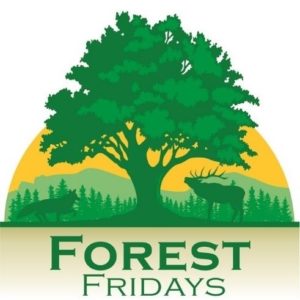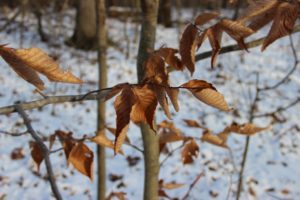
By Ryan Reed
Have you ever looked around the winter forest and noticed those brown and shriveled leaves still clinging to certain species of trees?
As scientists are prone to do, they’ve given this phenomenon a name—marcescence (mar-sess-ents), which loosely translates to leaves that cling to the tree after the usual period of leaf drop in deciduous species.
Two types of trees that are well-known to exhibit marcescence in Pennsylvania are the oaks and American beech. Three others that display this habit (not always, though) are hornbeam, hophornbeam, and slippery elm.

American beech in winter.
The physiological reason for this odd tendency to retain leaves through winter is the failure to develop the abscission layer, a hardened band of vascular cells between the leaf petiole and stem. Other species that dependably lose their leaves every year, like poplars and maples, nearly always develop a functional abscission layer that punctually severs their respective leaves.
American beech in winter.
The evolutionary reason for marcescence is not clear, but has been hypothesized to discourage bud browsing (by animals like deer) by hiding buds or shrouding them with unpalatable, dry leaf matter. Other researchers have posited that retention of leaves until spring synchronizes the leaf drop to optimally match decay and subsequent release of nutrients when the tree needs it most. Another possible explanation is that leaves retained into spring increase soil moisture by producing shade during a time when soils are typically very dry.
Whatever the reason, it’s always interesting to think about why trees do what they do, noting that Mother Nature does not waste resources in finding ways to survive. Fortunately, the visible adaptations that help plants and trees to survive result in great biodiversity, adding interest to our forested landscapes, even in winter.
Forest Fridays is a feature of the DCNR Bureau of Forestry.




